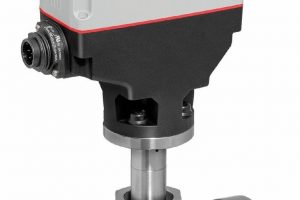Today, the world’s crude oil production amounts to over 72 million barrels per day. This crude is shipped, transferred, stored and processed by refineries into more than a thousand different mineral oil products. In the course of intensive processing it is likely that some oils may leak into the waste water, which could potentially harm the micro-organisms in the waste water treatment plant. To prevent this, there is a great need for reliable and rapid oil-in-water (OIW) analysers.
The author: Piet Broertjes Specialist Environmental Projects, ODS Sampling and Analytical Systems
Most OIW analysis methods are based on indirect measurements, meaning that the oil’s consistency, composition and origin affect the results; a correlation to the corresponding OIW laboratory methods (EN ISO 9377–2) is therefore urgently required. Unfortunately, this presents a real challenge when the OIW composition varies and there is a mix of different, unknown oil types. TOC analysers, on the other hand, offer direct OIW analysis, measuring all types of oil, fat or grease regardless of origin using carbon counting. This involves a so-called sum parameter analysis that responds to all organic hydrocarbon species. As it is a direct oxidation method, the outcome is defined by a chemical oxidation equation. The TOC method is not, and cannot be made to be, selective to exclusively oily or fatty hydrocarbons, although this is not even necessary in many applications because no organic components other than oil are present. As a general rule, it is particularly suitable for monitoring storm water and rainwater run-off, spill detection, shock loading, boiler feed water, return condensate and influent analysis in refineries, oil terminals, oil blending facilities, etc.
Monitoring a refinery tank farm
A huge refinery site maintains over a hundred tanks. Many petroleum oil products are stored on this site, e.g. crude, liquid oil, white oil, liquid paraffin, kerosene, aromatics, jet fuel, petrol, fuel oil, diesel, gasoline and fast, heavy and light naphtha. A variety of pumps, valves, pipelines, truck loading stations, jetties, loading and off-loading installations and blenders are operated. Storm, rain and process water is collected in a sewer system and runs off into the main waste water treatment plant. Some of the petroleum products inevitably leak into the discharged water during operation and this could potentially harm the micro-organisms in the waste water treatment plant.
ODS Sampling & Analytical Systems engineered and installed an OIW analysis system consisting of a reliable and suitable online analyser with a climate controlled analyser shelter and a well-designed sampling and transfer system. Waste water contamination can be caused by several products with a changing composition, depending on the loading and unloading activities that take place. Online OIW analysers based on indirect measurement techniques are unable to respond to all these oil types and waste water compositions; they are consequently of no use at all and a correlation to a laboratory method that is compliant with EN ISO 9377–2 is virtually impos-sible. A specific OIW analyser was not necessary as only mineral and petroleum oil was present in the company’s waste water and TOC analysers have the advantage that they respond to all organic carbon species.
Selection of the TOC analyser
Many TOC analysers available in the market are not inherently suitable for oily applications. Firstly, parts that come into contact with the sample can be continuously contaminated. Secondly, oil is hydrophobic: oil and water do not mix. Finally, most TOC analysers have a lim-ited measurement range up to a maximum of 2000 mg carbon/l, which cannot be extended using dilution because this is not a recommended technique for oily samples.
The QuickTOC process analyser manufactured by LAR, on the other hand, features a relatively simple design that is better suited for the purpose. Maintenance is reduced because the analyser has a process-controlled, XY-driven robot that copies the manual laboratory methodology. This robot positions an injection needle in a sample overflow vessel and then in the injection port of the 1200 °C reactor or a waste vessel, where the oils and greases contained in the sample are fully oxidised. Since oil tends to stick to wetted parts, most analysers become contaminated over time, leading to so-called memory effects which cause relatively clean samples to be systematically measured as too high. The great advantage of the QuickTOC is that only the injection needle can become contaminated; it is cleaned with hot rinse water, however, directly after the sample injection.
Sampling and transfer
A well-designed sampling and transfer system was of vital importance. The analyser shelter was placed as close as possible to the waste water stream. The submersible impeller pump installed there has the capability to force water flowing at a high velocity through the 1 ½“ fast sample loop towards the analyser. The Flow-Sampler extracts the sample according to the so-called anti-isokinetic fluid dynamics principle. In contrast to a filter, no sample conditioning is needed as large, heavy and solid parts tend to stay in the main stream at high velocities and only fluids are extracted.
cpp-net.com/0113422
Share:






